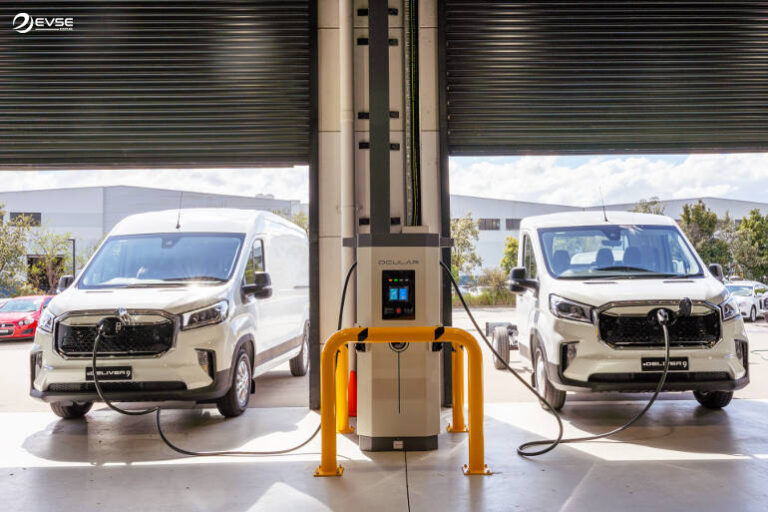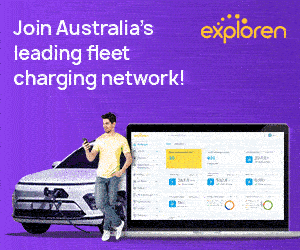As the push for sustainability grows, the adoption of electric vehicles (EVs) in fleets is becoming a priority for fleet managers. According to Sam Korkees, Co-Founder of EVSE, the shift to EVs is gaining momentum, and fleet managers must act now to ensure a smooth transition. Here’s what you need to do to integrate EVs into your fleet, based on Sam’s experience in the Australian market.
1. Assess Fleet Requirements
Sam has seen firsthand how fleet electrification has evolved from token sustainability purchases to genuine business solutions. He notes that the latest generation of EVs now have practical ranges of 400–500 kilometres, making them suitable for more demanding fleet operations. Start by evaluating the daily mileage and use patterns of your fleet vehicles. Determine which vehicles can be replaced with EVs based on their routes, stop-and-go traffic patterns, and the availability of charging infrastructure.
2. Consider Total Cost of Ownership (TCO)
One of the key benefits of EVs, as Sam mentions, is their reduced running costs. EVs have lower maintenance requirements due to fewer moving parts, and electricity is cheaper than petrol. Sam emphasises that while the upfront cost of EVs may be higher, the long-term savings in fuel and maintenance significantly reduce the total cost of ownership (TCO). When presenting a business case, it’s crucial to include these savings, along with any available government incentives for electrification.
3. Invest in Scalable Charging Infrastructure
Charging infrastructure is a major component of fleet electrification. Sam’s company, EVSE, has helped fleets nationwide install AC and DC chargers, allowing businesses to charge vehicles at depots or back-to-base locations. For smaller fleets, Sam highlights the benefits of using simpler AC chargers, while larger commercial vehicles may need faster DC chargers.
EVSE’s innovative “Charging as a Service” model can help fleet managers avoid the heavy upfront costs of infrastructure. Instead of a large capital outlay, the cost is spread out in manageable monthly payments, which Sam describes as similar to paying for telematics or other fleet services. This model also includes ongoing support and maintenance, ensuring fleet managers aren’t left with the burden of troubleshooting faulty equipment.
4. Develop a Home and Depot Charging Policy
One challenge Sam identifies for fleet managers is balancing charging across various locations, including home and depot charging. EVSE offers a solution by managing both with its Charging as a Service product. Sam points out that home charging can be tricky due to liability and employee turnover concerns. By using a simple monthly fee structure, fleet managers can manage home charging without worrying about complicated logistics or capital outlays. Businesses can also monitor electricity usage at employees’ homes and reimburse costs accordingly.
Sam recommends developing a clear policy that outlines when and where employees should charge vehicles. Fleets with central depots may use overnight charging, while other fleets may rely on a mix of home, public, and depot charging.
5. Educate Your Team on EV Use
Sam also emphasises the importance of education and training for drivers. EVs operate differently from petrol or diesel vehicles, so fleet managers must provide proper training on how to maximise range, use charging infrastructure, and understand the unique aspects of driving EVs. Providing this education helps ensure drivers feel confident using new technology.
6. Monitor and Optimise Performance
Lastly, Sam’s experience with fleets shows the importance of monitoring performance to optimise EV operations. Telematics systems and charging data can help fleet managers track vehicle usage, charge times, and electricity consumption, allowing them to make adjustments and ensure maximum efficiency. As fleets move towards adopting larger electric vehicles, such as trucks and buses, load management and smart charging solutions will become even more critical.
The transition to EVs is not without its challenges, but as Sam Korkees from EVSE points out, the market is evolving rapidly. With the right infrastructure, policies, and education in place, fleet managers can successfully electrify their operations. Whether it’s using innovative models like Charging as a Service or ensuring long-term cost savings, the benefits of EVs are becoming too significant to ignore.
By following these steps and leveraging the expertise of providers like EVSE, fleet managers can future-proof their operations while contributing to a greener future.







